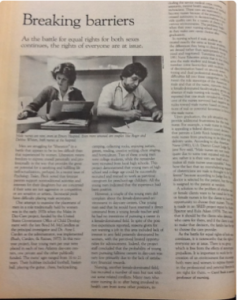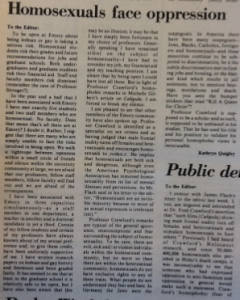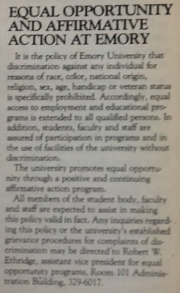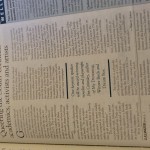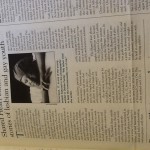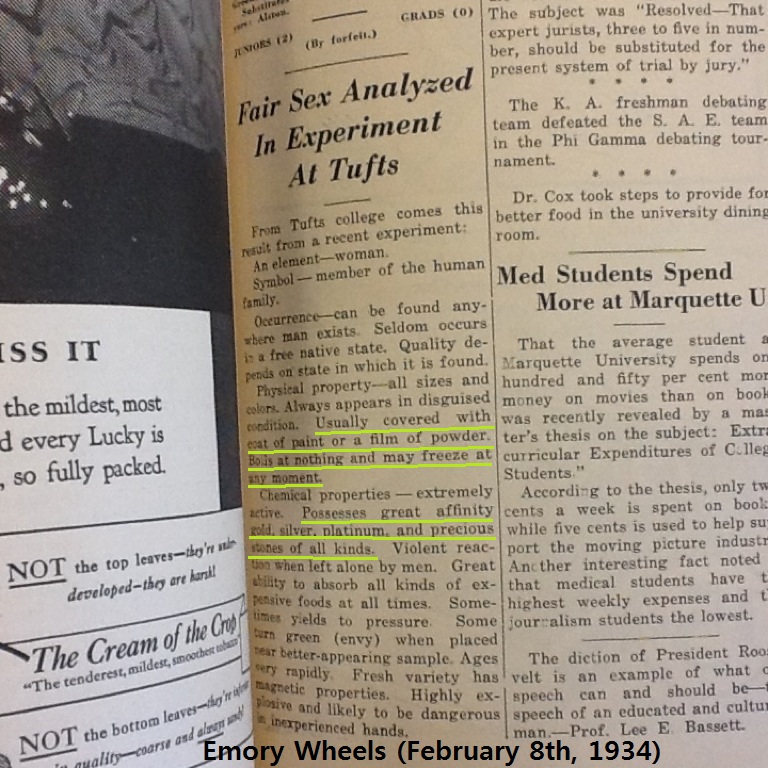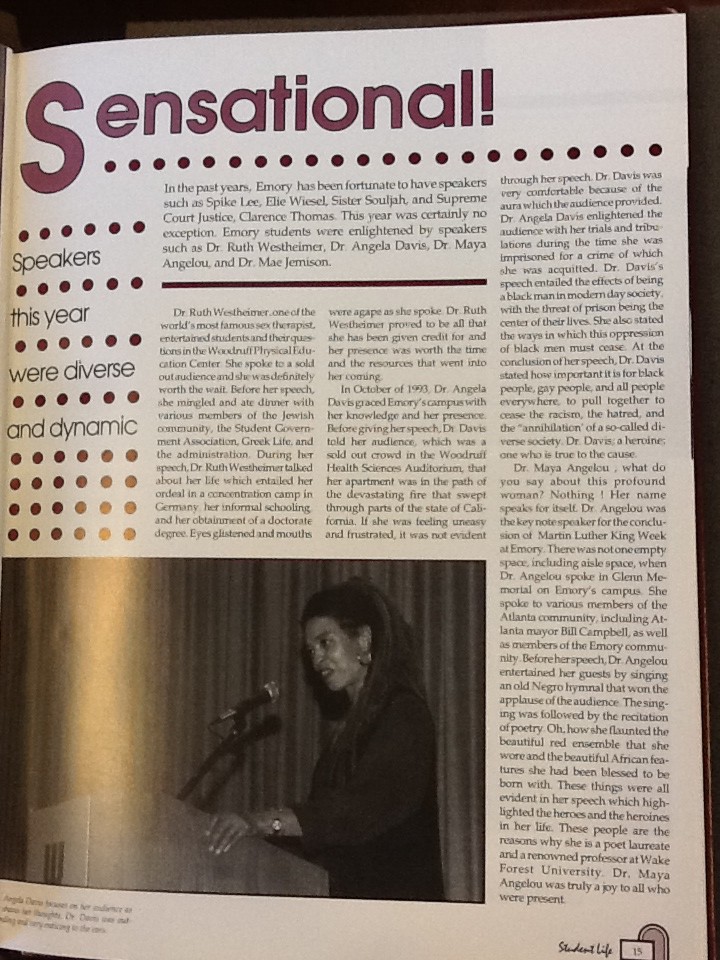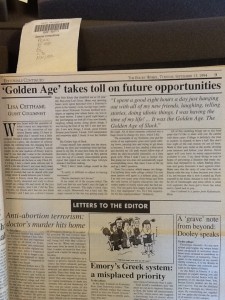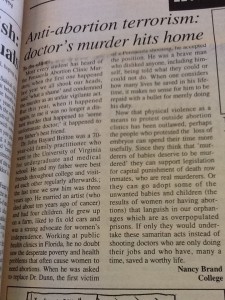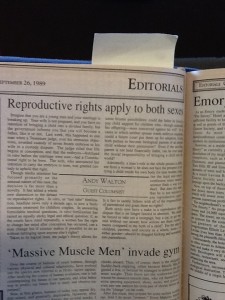I feel that in today’s society, we tend to overlook the severity of discrimination that still exists against inter-racial relationships. With gay marriage as a major political debate, it is easy to forget that mixed-race marriage was against in the law in our country until 1967. Through his interviews with various couples, Patrick Johnson demonstrates the struggles that many gay couples have been forced to face – including racism. In his book, Sweet Tea, Johnson interviews various men who were in committed, long-term, gay relationships. Johnson not only focused on the homosexual relationships, but also inter-racial relationships between gay individuals.
I would love to see how well The Notebook or Hunger Games would have done in the box office if the main character wasn’t white, or better yet, wasn’t heterosexual. Johnson’s unique approach to this paper was interesting, and reminded me that discrimination on the basis of sexual orientation is just as wrong as racial discrimination.
Bob’s story in Johnson’s Sweet Tea was a touching and poetic. While reading his story, I couldn’t help but think that his experience consisted of every element necessary to create a blockbuster romantic film. Bob met his partner in the military in 1968. The two didn’t see each other again until John happened to come across his number a year later while enrolled in Emory’s nursing program. Rare stories like this are all you need to make a romantic movie; however, I wonder how many people would run to the movie theater to catch this love story between two men. Lately, there have been many movies and television programs with homosexual themes (e.g. Milk, HBO), but I think it is overly optimistic at this point to say that discrimination (racial, sexual orientation) doesn’t exist in Hollywood any more. In fact, racism is still very much alive – especially in Hollywood. Brokeback Mountain was groundbreaking in Hollywood film history. It opened the doors for filmmakers to take on gay themes in film without as much fear of failure. I can’t help but wonder… how would the reaction to the film have changed if one of the main characters had been black. An inter-racial, gay relationship? I think I know what the answer to that question is… but I will let you decide.
Another Part of Bob’s story that caught my eye was the fact that he met his partner in the Military. Racial segregation was government policy until Truman’s order in 1948, which allowed for people with any race, color, religion, and national origin to have equal treatment. It boggles my mind how It was only a year ago when “don’t as, don’t tell” was repealed. People, regardless of sexual orientation, were allowed to serve openly in the military. Wikipedia’s definition of “Don’t ask, don’t tell” (DADT) is: a United States policy that prohibited military personnel from discriminating against closeted homosexual/bisexual service members, while barring openly gay/lesbian/bisexual person from military service. The only thing I can think of is why the hell did it take so long for this ridiculous policy to get repealed?

